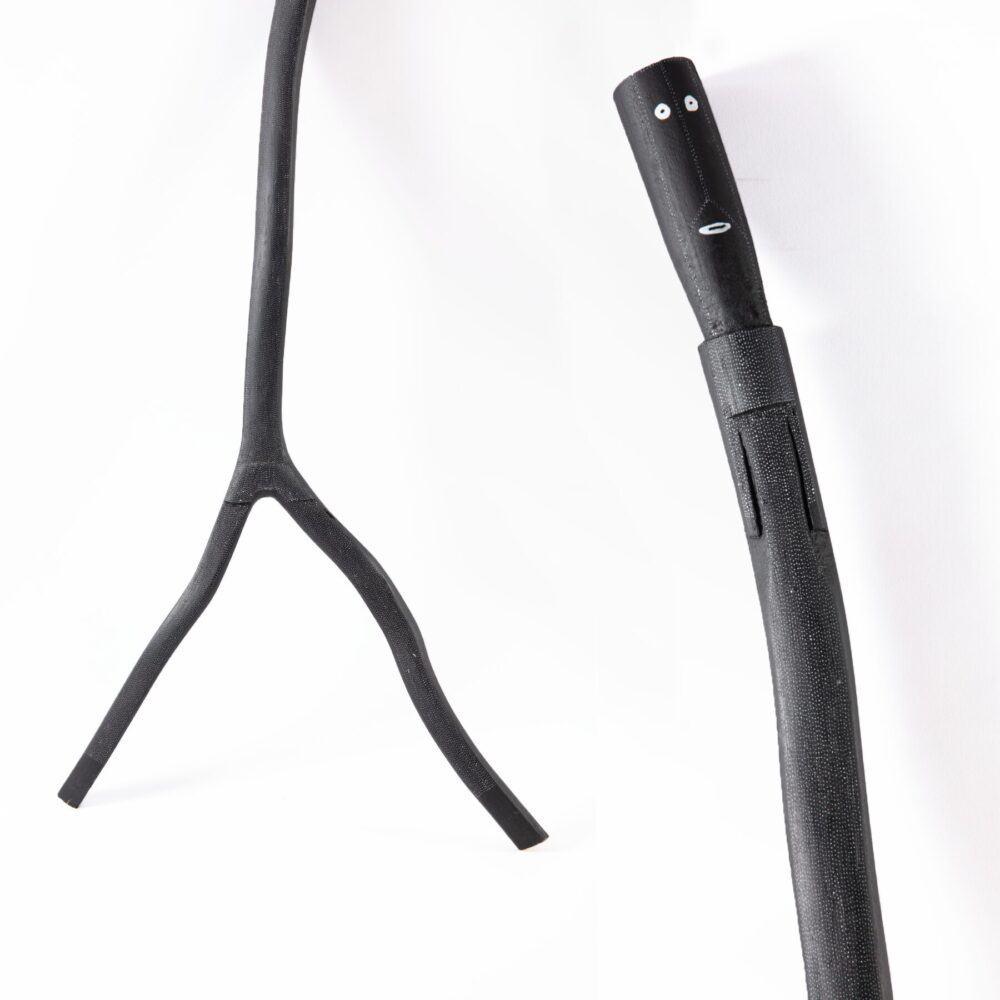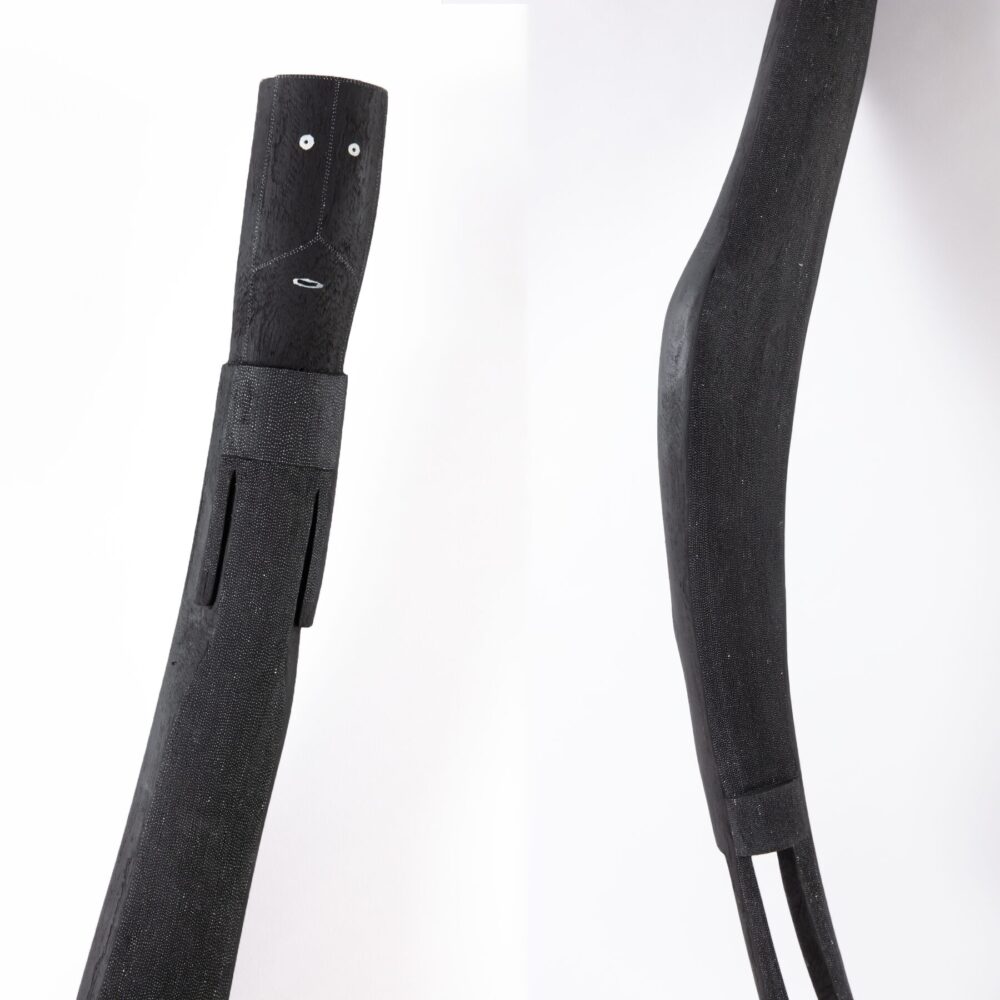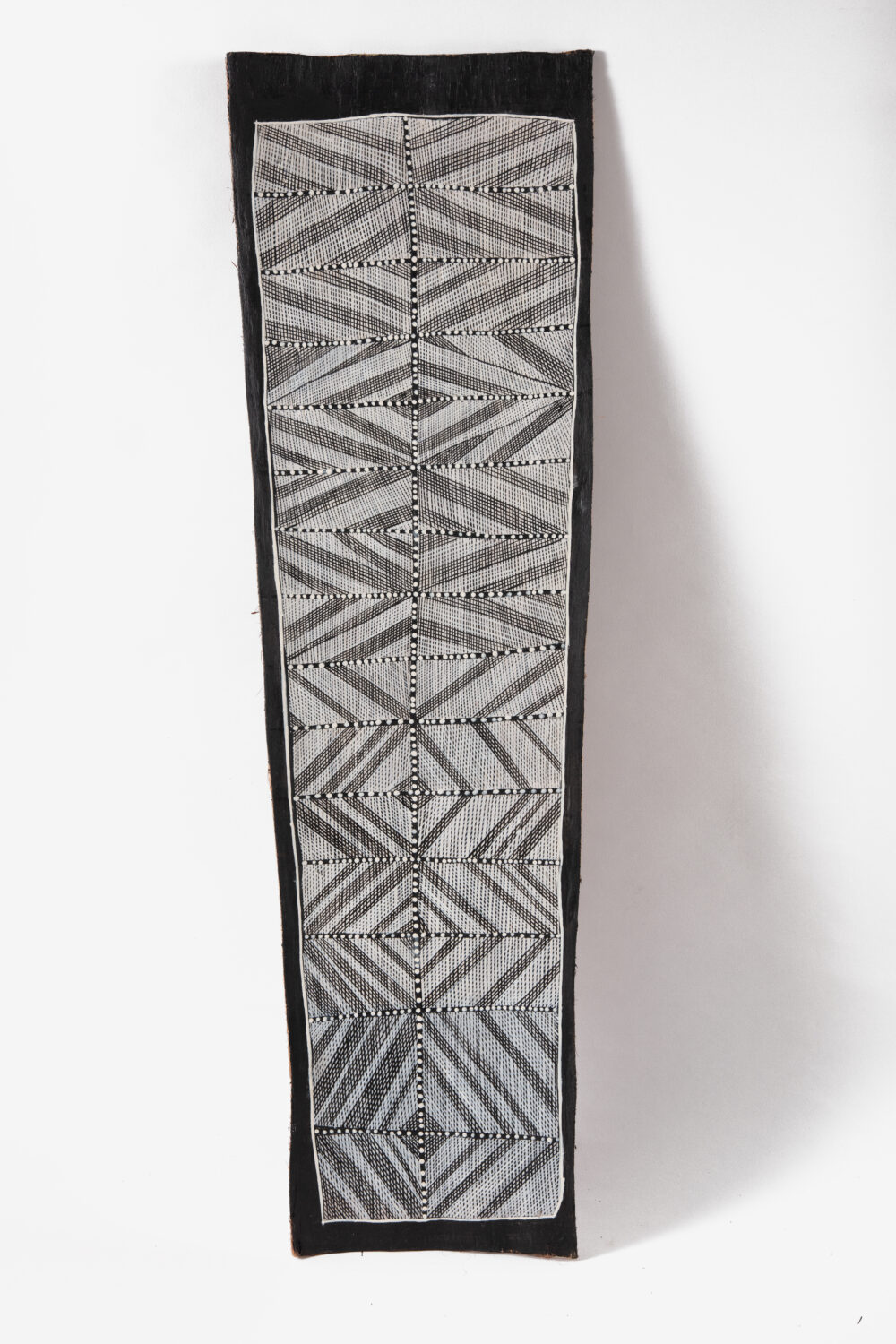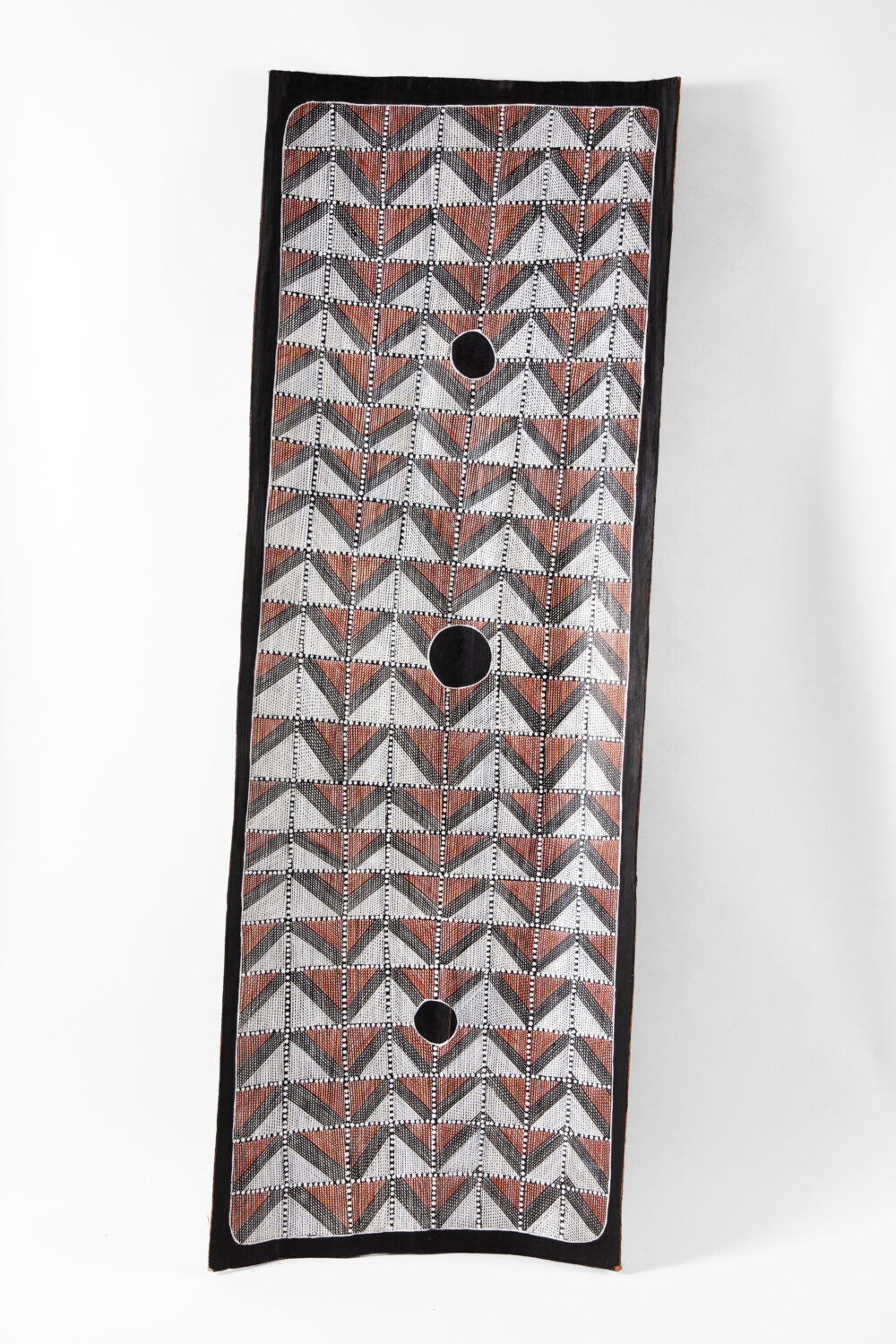


Langauges: Kuninjku ● Community: Maningrida ● Clan: Dangkorlo
Rosina Gunjarrwanga’s line work comes from the Duwa moiety Wak design of Djimarr (crow). The crow ancestor Djimarr transformed into a rock during creation times and lies at the bottom of a waterway at Kurrurldul. Wak is a design used in Mardayin (a secret sacred ceremony) and has been interpreted in the work of Mawurndjul’s elder brother Njiminjuma, his daughter Kamanj Irenie Ngalinba and her sister Kamanj Aileena Lamanga, and now Gunjarrwanga. However, being a young woman who has never seen this design in its original ceremonial form, she lays it down line by line, square by square, grid by grid as a new design, each time layered from memories, teachings and other places in her mind.
The stillness of Gunjarrwanga’s works belie the busy sites where they are created. Highly mobile, a half-finished work might be wrapped in a bedsheet and transported to several sites as Gunjarrwanga fulfils her dual roles as djungkay (cultural manager) for her mother’s Country and clan and owner of her father’s Country and clan, travelling across the vast Kuninjku clan estates.
Wak Wak 875-22, 2022
$2,000
In stock
Langauges: Kuninjku ● Community: Maningrida ● Clan: Dangkorlo
Rosina Gunjarrwanga’s line work comes from the Duwa moiety Wak design of Djimarr (crow). The crow ancestor Djimarr transformed into a rock during creation times and lies at the bottom of a waterway at Kurrurldul. Wak is a design used in Mardayin (a secret sacred ceremony) and has been interpreted in the work of Mawurndjul’s elder brother Njiminjuma, his daughter Kamanj Irenie Ngalinba and her sister Kamanj Aileena Lamanga, and now Gunjarrwanga. However, being a young woman who has never seen this design in its original ceremonial form, she lays it down line by line, square by square, grid by grid as a new design, each time layered from memories, teachings and other places in her mind.
The stillness of Gunjarrwanga’s works belie the busy sites where they are created. Highly mobile, a half-finished work might be wrapped in a bedsheet and transported to several sites as Gunjarrwanga fulfils her dual roles as djungkay (cultural manager) for her mother’s Country and clan and owner of her father’s Country and clan, travelling across the vast Kuninjku clan estates.












